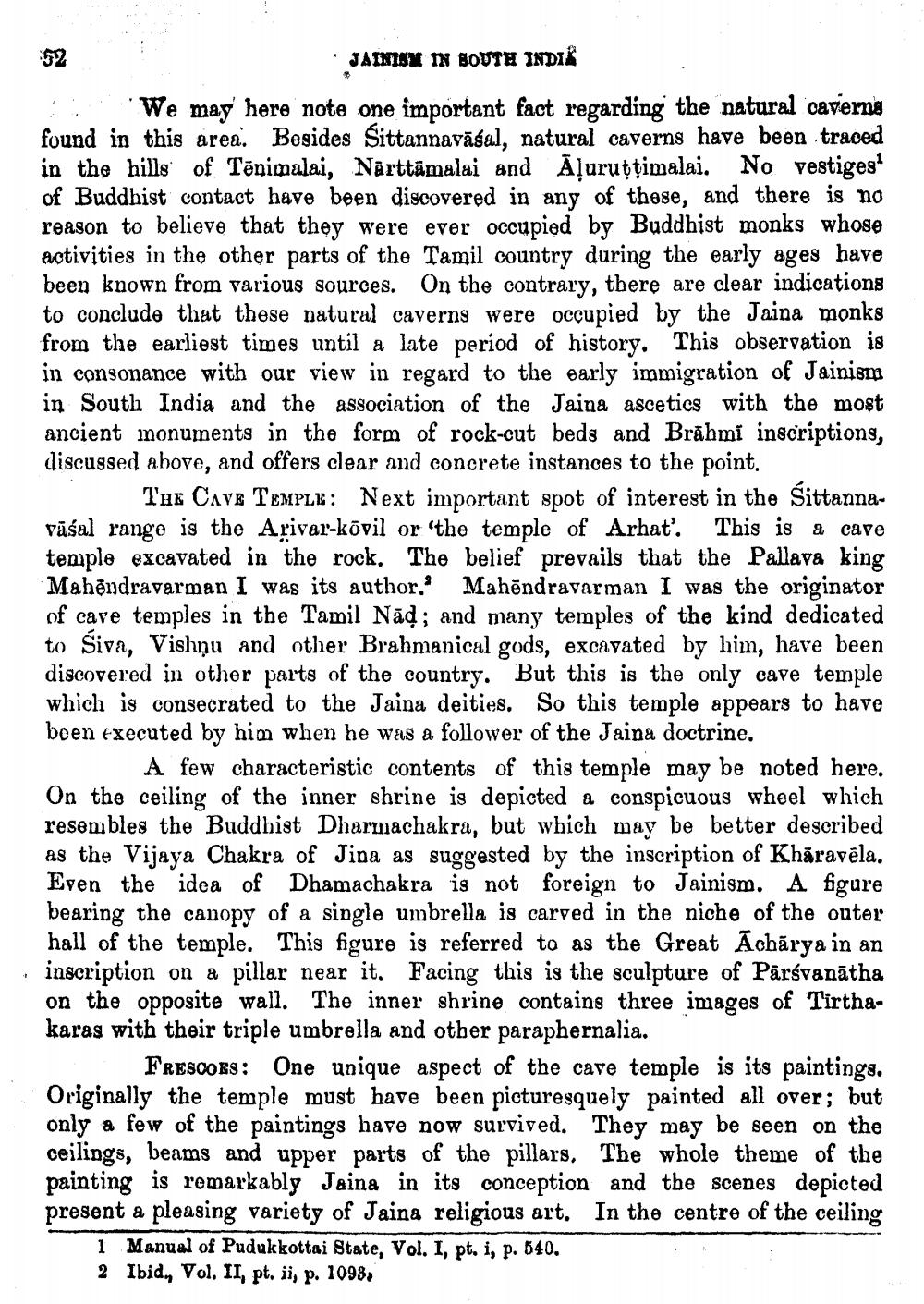________________
· JAINISM IN SOUTH INDIA We may here note one important fact regarding the natural caverna found in this area. Besides Sittannavāśal, natural caverns have been traced in the hills of Tēnimalai, Nārttāmalai and Āļuruţțimalai. No vestiges of Buddhist contact have been discovered in any of those, and there is no reason to believe that they were ever occupied by Buddhist monks whose activities in the other parts of the Tamil country during the early ages have been known from various sources. On the contrary, there are clear indications to conclude that these natural caverns were occupied by the Jaina monks from the earliest times until a late period of history. This observation is in consonance with our view in regard to the early immigration of Jainism in South India and the association of the Jaina ascetics with the most ancient monuments in the form of rock-cut beds and Brāhmi inscriptions, discussed above, and offers clear and concrete instances to the point.
The Cave TEMPLE: Next important spot of interest in the Sittannavāśal range is the Arivar-kõvil or the temple of Arhat. This is a cave temple excavated in the rock. The belief prevails that the Pallava king Mahondravarman I was its author, Mahõndravarman I was the originator of cave temples in the Tamil Nad; and many temples of the kind dedicated to Siva, Vishņu and other Brahmanical gods, excavated by him, have been discovered in other parts of the country. But this is the only cave temple which is consecrated to the Jaina deities. So this temple appears to have been executed by him when he was a follower of the Jaina doctrine.
A few characteristic contents of this temple may be noted here. On the ceiling of the inner shrine is depicted a conspicuous wheel which resembles the Buddhist Dharmachakra, but which may be better described as the Vijaya Chakra of Jina as suggested by the inscription of Khāravēla. Even the idea of Dhamachakra is not foreign to Jainism. A figure bearing the canopy of a single umbrella is carved in the niche of the outer hall of the temple. This figure is referred to as the Great Acharya in an inscription on a pillar near it. Facing this is the sculpture of Pārsvanātha on the opposite wall. The inner shrine contains three images of Tirthakaras with their triple umbrella and other paraphernalia.
FRESORS: One unique aspect of the cave temple is its paintings. Originally the temple must have been picturesquely painted all over; but only a few of the paintings have now survived. They may be seen on the ceilings, beams and upper parts of the pillars. The whole theme of the painting is remarkably Jaina in its conception and the scenes depicted present a pleasing variety of Jaina religious art. In the centre of the ceiling
1 Manual of Pudukkottai State, Vol. I, pt, i, p. 040. 2 Ibid., vol. II, pt, ii, p. 1093,




